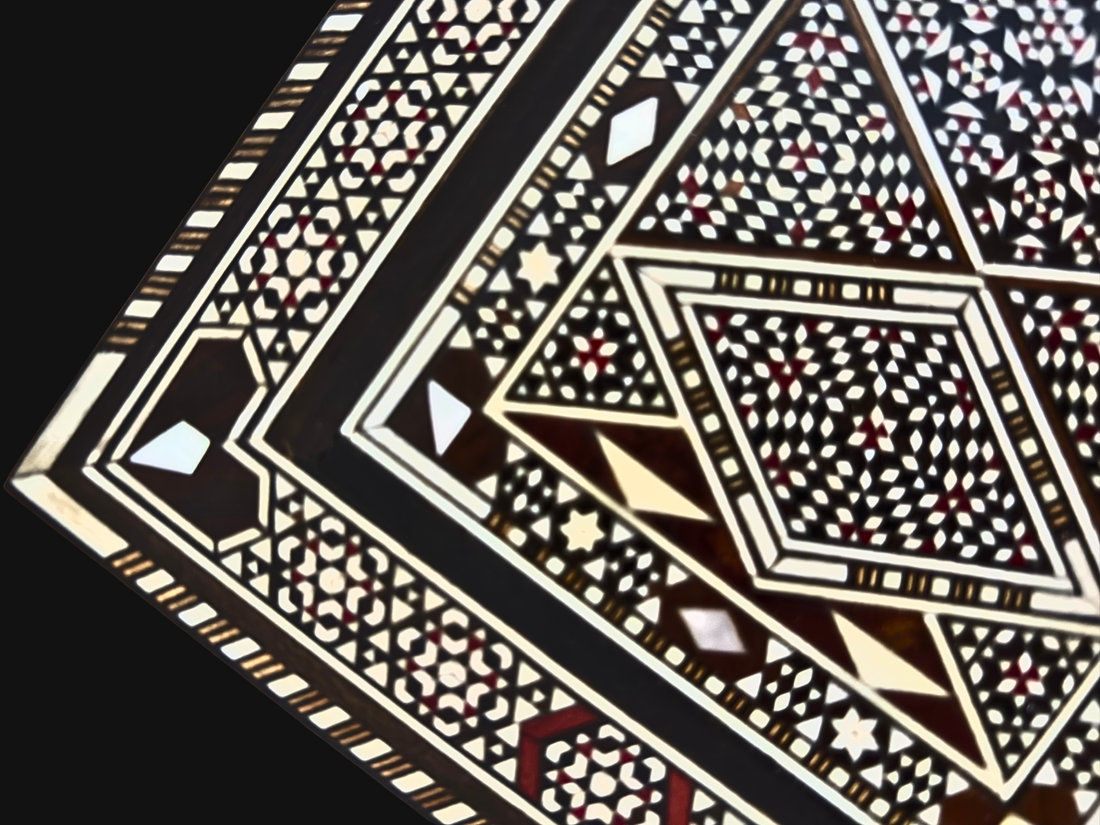
Jak Rozpoznać Prawdziwą Mozaikę Damasceńską: Przewodnik dla Kupujących i Miłośników
Udostępnij
Nie wszystkie pudełka mozaikowe są takie same
Wraz ze wzrostem popularności mozaiki damasceńskiej pojawia się także wiele imitacji — często masowo produkowanych i pozbawionych duszy oryginalnego rzemiosła. Jak więc rozpoznać, czy dany przedmiot jest naprawdę wykonany ręcznie w Damaszku?
Oto kilka prostych wskazówek:
1. Precyzja w niedoskonałości
Prawdziwa mozaika nie jest idealna jak maszyna. Przyjrzyj się uważnie — jeśli małe drewniane lub perłowe elementy różnią się nieznacznie kształtem lub rozmieszczeniem, to dobry znak. Ręczna robota często ma subtelne asymetrie odzwierciedlające ludzką pracę.
2. Materiał ma znaczenie
Autentyczne przedmioty wykonane są z naturalnego drewna (np. orzecha włoskiego lub drewna cytrynowego) oraz prawdziwej masy perłowej. Podróbki często używają drukowanego plastiku lub naklejek, które naśladują wygląd, ale nie fakturę ani głębię inkrustacji.
3. Waga i wykończenie
Prawdziwe pudełko damasceńskie jest ciężkie — to lite drewno, nie puste w środku. Powierzchnia powinna być gładka w dotyku, a inkrustacja powinna być równa z drewnem, nie wystająca ani nierówna.
4. Spójność wzoru
Tradycyjne wzory damasceńskie są geometryczne i wyważone. Powtarzające się gwiazdy, sześciokąty i przeplatające się linie są powszechne. Jeśli wzór wygląda na przypadkowy lub karykaturalny, prawdopodobnie nie jest autentyczny.
5. Pochodzenie rzemiosła
Zapytaj, gdzie wykonano przedmiot. Autentyczna mozaika damasceńska nadal powstaje w Damaszku i okolicznych syryjskich miastach, często w rodzinnych warsztatach. Niektórzy sprzedawcy mogą podać nawet nazwiska lub historię rzemieślników.
Wybierając prawdziwą mozaikę damasceńską, nie kupujesz tylko dekoracji — inwestujesz w kulturę, wspierasz rzemieślników i pomagasz zachować żywe dziedzictwo.
W kolejnym poście przyjrzymy się znaczeniom wzorów geometrycznych. Bądź na bieżąco!
